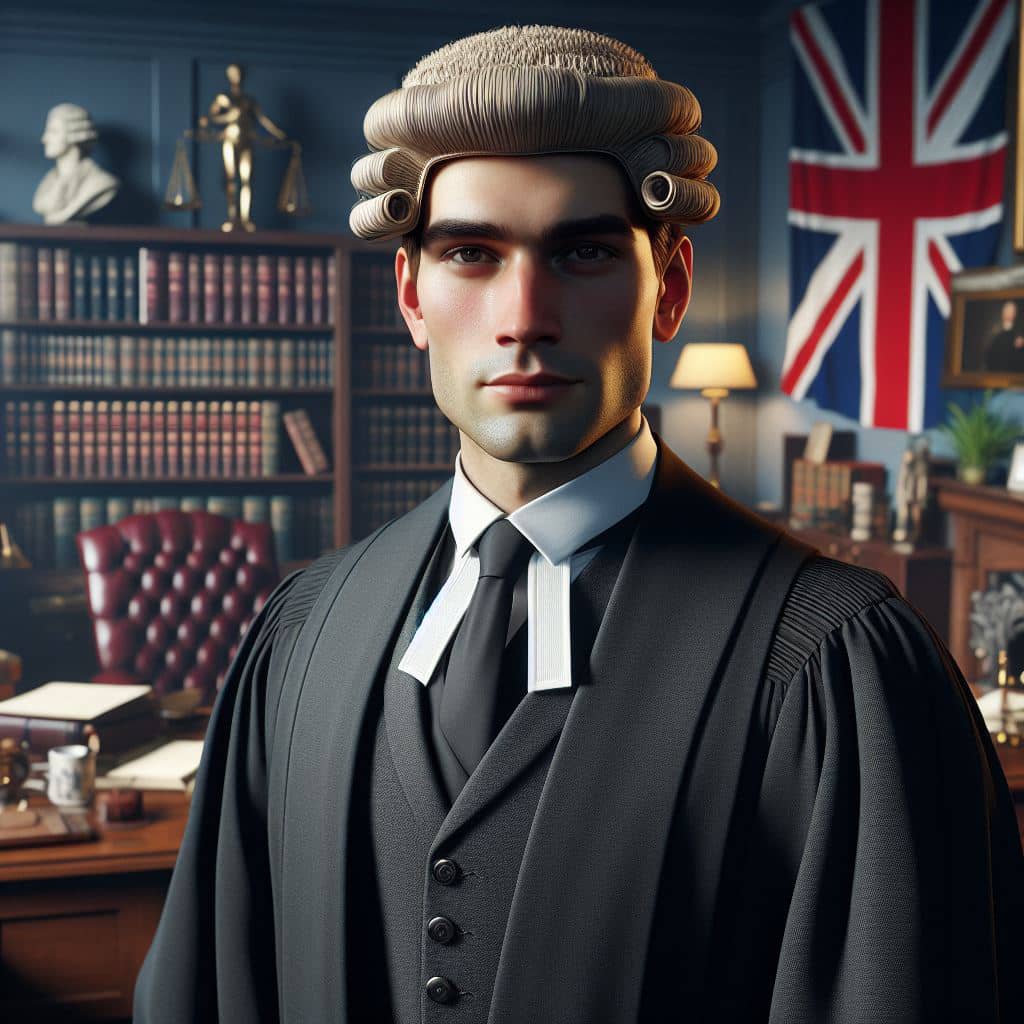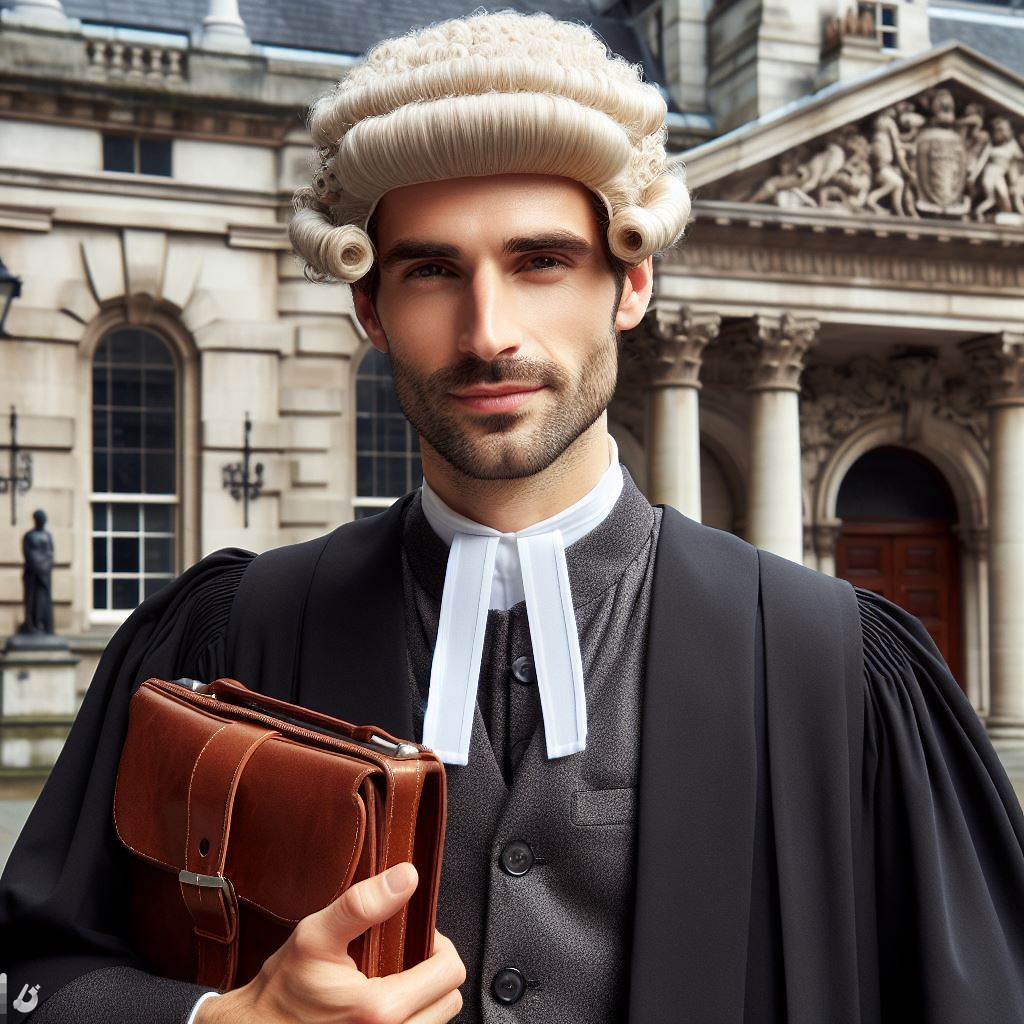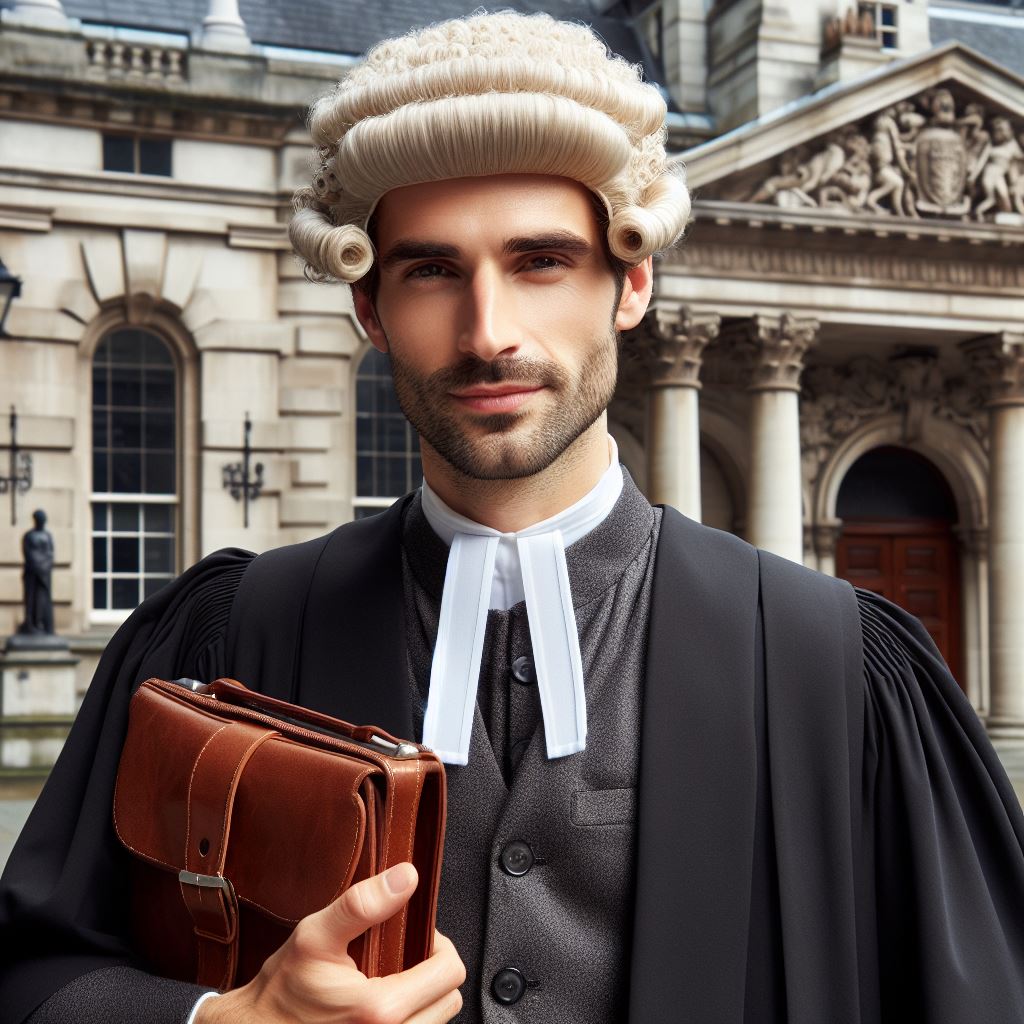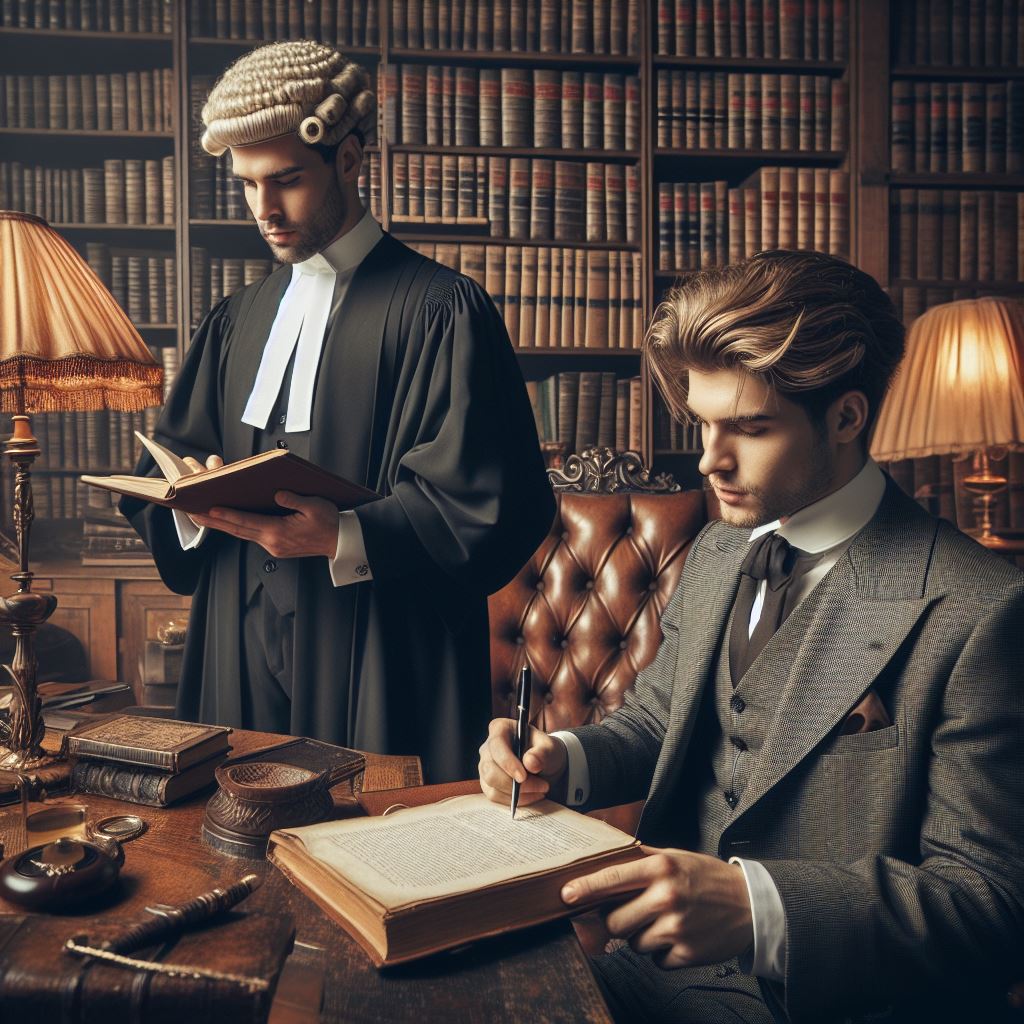Introduction
Explanation of the topic (Barristers’ dress code: wigs and gowns)
The barristers’ dress code, consisting of wigs and gowns, has long been a tradition in the legal profession.
Importance of dress code in the legal profession
The dress code holds significant importance as it symbolizes professionalism, tradition, and impartiality.
In the legal realm, the iconic sight of barristers adorned in wigs and gowns is more than a mere aesthetic tradition; it’s a symbol deeply embedded in the historical tapestry of the legal profession.
Brief Explanation of the Topic
- Historical Roots Wigs, known as “barrister’s wigs” or “full-bottomed wigs,” trace their origins to the 17th century when they symbolized authority, wisdom, and impartiality.
- Evolution of Gowns Barristers’ gowns have evolved from everyday attire to distinctive garments, differentiating them from solicitors and reflecting the gravity of their courtroom roles.
- Professional Distinction The dress code is a means of visually distinguishing barristers, highlighting their specialized roles in court advocacy, legal analysis, and case representation.
Importance of Dress Code in the Legal Profession
- Symbol of Tradition and Authority The dress code serves as a living link to legal history, connecting contemporary barristers to their predecessors, emphasizing continuity, and projecting authority.
- Equality in the Courtroom Wearing standardized attire fosters a sense of equality among legal professionals, minimizing distractions, and allowing the focus to remain on legal arguments and justice.
- Impartiality and Professionalism The uniformity of wigs and gowns underscores the idea of impartiality, emphasizing that justice is blind and independent of individual barristers’ personal styles or appearances.
- Professionalism and Client Confidence A barrister’s attire instills confidence in clients. The formality of the dress code reassures clients that their legal representative is dedicated, competent, and well-versed in legal traditions.
- Courtroom Decorum The dress code contributes to maintaining the seriousness and solemnity of court proceedings, emphasizing the gravity of the legal issues at hand and fostering an atmosphere of respect.
- Tradition as a Bond The shared adherence to the dress code creates a sense of camaraderie among legal professionals, fostering a collective identity and reinforcing the unique nature of the legal community.
- Adaptability to Changing Times While the dress code maintains its historical significance, it has adapted to modern sensibilities. Contemporary variations of wigs and gowns reflect a balance between tradition and practicality.
- Global Recognition The international recognition of the barrister’s dress code contributes to a global legal identity. It serves as a visual testament to the universality of legal principles and practices.
In essence, the barrister’s dress code, with its wigs and gowns, is not a mere sartorial choice but a symbolic representation of the legal profession’s rich history, values, and commitment to justice.
Its importance goes beyond aesthetics, influencing perceptions of authority, professionalism, and the pursuit of fairness in the hallowed halls of justice.
Historical Context of Barristers’ Dress Code
Origins of wigs and gowns in the profession
- Wigs and gowns have been an integral part of the barristers’ profession for centuries.
- The tradition can be traced back to the 17th century in England.
- The initial purpose of wigs was to indicate social status and to protect lawyers’ heads from lice.
- Gowns, on the other hand, served as a symbol of authority and professionalism.
Evolution of the dress code over time
- During the 18th century, the dress code became more standardized and mandatory.
- The length and color of the wigs became indicators of seniority and rank.
- Wigs made of horsehair were widely used, but they were later replaced by lighter and more comfortable materials.
- In the 19th century, black gowns with silk facings became the preferred attire for barristers.
- The dress code continued to evolve, with modifications made to adapt to changing times and trends.
Significance of traditional attire in maintaining a sense of professionalism
- The traditional attire of wigs and gowns plays a crucial role in upholding the image of the legal profession.
- It creates a sense of formality and seriousness, ensuring that court proceedings are conducted with dignity.
- Wearing wigs can help conceal personal identities, emphasizing the importance of objectivity in the courtroom.
- The attire also levels the playing field, making all barristers appear equal and focused solely on their arguments.
- It fosters a sense of tradition and history that instills respect for the legal system and its practitioners.
In short, the historical context of barristers’ dress code reveals the origins of wigs and gowns, their evolution over time, and the significance they hold in maintaining a sense of professionalism.
These traditional attire choices have become deeply ingrained in the legal profession, symbolizing authority, formality, and objectivity.
While some may argue that they are outdated, the dress code continues to play a vital role in upholding the image and values of the legal system.
It is a visual representation of the respect, seriousness, and history associated with the legal profession.
Read: The Role of Barristers in UK Courts
Purpose and Function of Wigs and Gowns
Symbolism of wigs and gowns in the courtroom
Wigs and gowns have a long-standing tradition in the legal profession, serving both symbolic and practical purposes in the courtroom.
In terms of symbolism, wigs and gowns represent the authority and tradition of the legal system.
They have become iconic symbols of the legal profession, signifying professionalism and dignity.
When a barrister dons a wig and gown, they are embracing their role as advocates of justice and upholders of the law.
Furthermore, the attire serves as a visual reminder to all present in the courtroom of the seriousness and solemnity of the legal proceedings.
Personalized UK Career Consulting
Receive tailored career guidance designed just for you. Get actionable steps and expert support to boost your career in 1-3 days. Take control of your career now.
Get StartedPractical reasons for wearing wigs and gowns
Aside from their symbolic value, wigs and gowns also have practical reasons for being an integral part of a barrister’s dress code.
1. Enhancing formality and solemnity of legal proceedings
The formal attire of wigs and gowns creates an atmosphere of respect and decorum in the courtroom.
By adhering to this long-established tradition, legal professionals contribute to the overall sense of order and seriousness that should prevail during legal proceedings.
The sight of barristers wearing wigs and gowns can have a psychological impact on all individuals involved, reminding them of the weightiness and importance of the matters being discussed.
2. Facilitating anonymity and impartiality of the barristers
Wigs, in particular, serve the purpose of concealing a barrister’s identity to some extent.
By wearing wigs, barristers are able to detach themselves from their personal identities and assume a more neutral and impartial role in court.
This anonymity can help ensure that barristers are judged solely on the merits of their arguments and legal expertise, rather than being influenced by personal biases or preconceived notions.
Moreover, wearing wigs and gowns helps maintain a level playing field among barristers, emphasizing equality before the law and avoiding distractions based on appearance or social standing.
In essence, the purpose and function of wigs and gowns in the context of the barristers’ dress code are twofold.
Symbolically, they represent the authority and tradition of the legal profession, while practically, they enhance the formality and solemnity of legal proceedings and facilitate anonymity and impartiality among barristers.
Although some may argue that these traditions are outdated and unnecessary in modern times, their continued use serves as a reminder of the enduring principles and values upon which the legal system is built.
Read: Path to Becoming a Barrister in the UK

Criticisms and Controversies Surrounding the Dress Code
Opposition against the use of wigs and gowns
- Many argue against the relevance and necessity of such outdated attire.
- Suggestions for alternatives that reflect contemporary values have been put forward.
Counter-arguments in favor of preserving the traditional dress code
- The preservation of legal traditions and cultural heritage is a key argument.
- Maintaining a distinct identity for the legal profession is another important factor.
The barristers’ dress code, with its iconic wigs and gowns, has been a subject of both criticism and controversy.
While some argue against the use of such attire, questioning its relevance and necessity, others present counter-arguments emphasizing the preservation of tradition and the unique identity it creates.
Your Dream Job Starts with a Perfect CV
Get a tailored CV and cover letter that captures your unique strengths and stands out in your industry. Let us help you make an unforgettable first impression.
Get StartedOpposition against the use of wigs and gowns
Arguments questioning the relevance and necessity of such attire
Many critics question the purpose of wearing wigs and gowns in modern legal settings.
They argue that these traditional garments originated in a different era and have lost their practical significance today.
Critics argue that the dress code may come across as archaic and hinder the accessibility and relatability of barristers to the general public.
Suggestions for alternatives that reflect contemporary values
Advocates for change propose various alternatives to the traditional dress code.
They believe that a more contemporary attire would better represent the evolving values and ideals of the legal profession.
Some suggest adopting formal business attire or robes without wigs as a more suitable and relatable option.
Counter-arguments in favor of preserving the traditional dress code
Preservation of legal traditions and cultural heritage
Supporters of the traditional dress code argue that it plays a crucial role in preserving legal traditions and the cultural heritage associated with the legal profession.
They believe that the attire symbolizes the history and respect for the legal system, linking the present with the past.
The continuity of these traditions is seen as a way to maintain a sense of order, stability, and legitimacy.
Maintaining a distinct identity for the legal profession
Another argument defending the use of wigs and gowns is the notion of maintaining a distinct identity for barristers.
The unique attire helps to set them apart from other professionals and creates a sense of professionalism and formality.
It is believed that the dress code adds gravitas and enhances the perception of expertise and authority.
In short, the barristers’ dress code, particularly the use of wigs and gowns, has faced both opposition and support.
While critics question the relevance and necessity of such attire, suggesting alternative options, supporters emphasize the preservation of tradition and the distinct identity it provides.
Optimize Your LinkedIn for Success
Boost your LinkedIn profile with a professional bio, keyword-rich headline, and strategic recommendations that attract recruiters. Stand out from the crowd and get noticed.
Optimize NowThe ongoing debate emphasizes the need for a balance between tradition and evolution in the legal profession’s dress code.
Read: Women in the UK Barristers’ Profession
Current Dress Code Practices and Adaptations
Overview of the dress code requirements in modern courts
- Wigs and gowns are mandatory in certain instances within the current dress code.
- There are exceptions and allowances made for certain types of cases.
Recent attempts to modernize the dress code
- Alternative attires have been introduced in some courts as an attempt to modernize the dress code.
- The changes have sparked reactions and debates among legal professionals and the public.
Read: Famous UK Barristers and Their Impact
Conclusion
Recap of the importance and historical significance of barristers’ dress code
The barristers’ dress code, including wigs and gowns, holds immense importance in the legal profession.
It is a tradition that dates back centuries and symbolizes the authority and professionalism associated with the practice of law.
Acknowledgment of evolving attitudes and ongoing discussions about the topic
However, in recent times, there has been a shift in attitudes towards the dress code.
Many argue that it is outdated and not reflective of the modern society we live in.
Ongoing discussions are taking place regarding potential reforms to the attire worn by barristers.
Final thoughts on the future of wigs and gowns in the legal profession
Looking ahead, it is unclear what the future holds for wigs and gowns in the legal profession.
Will they continue to be an integral part of the courtroom setting or will they fade away over time? Only time will tell.
It is important, however, to carefully consider the implications and potential consequences of any changes to this long-standing tradition.
While it is essential to adapt to the changing times, it is equally important to preserve the historical significance and traditions that have shaped the legal profession.
The dress code debate serves as a reminder that the legal community must strike a balance between honoring tradition and embracing progress.
This delicate balance will ensure that the legal profession maintains its integrity and commands the respect it deserves.
[E-Book for Sale]
500 Cutting-Edge Tech Startup Ideas for 2024 & 2025: Innovate, Create, Dominate
$19.99 • 500 Tech Startup Ideas • 62 pages
You will get inspired with 500 innovative tech startup ideas for 2024 and 2025, complete with concise descriptions to help you kickstart your entrepreneurial journey in AI, Blockchain, IoT, Fintech, and AR/VR.




